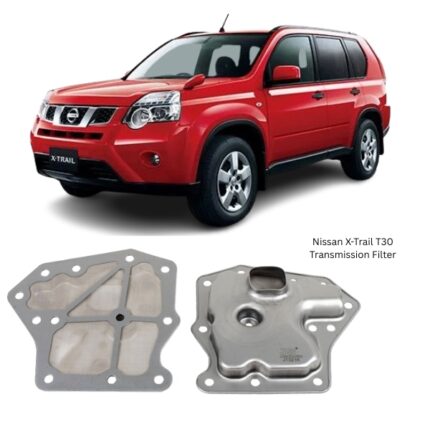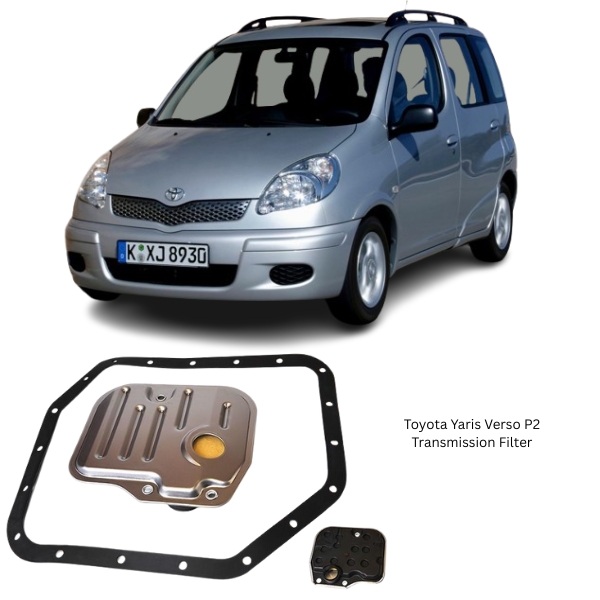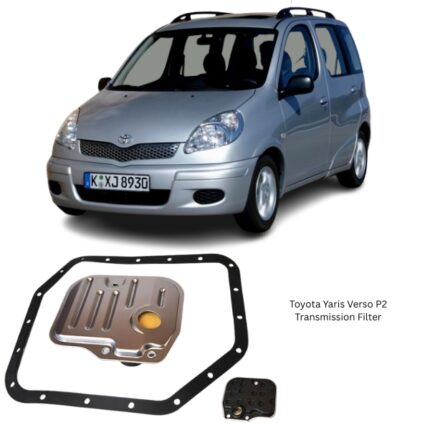Get Toyota Yaris Verso P2 Automatic Transmission Filter Assy JT425K in Kenya
An Automatic Transmission Filter Assembly is a critical component of any automatic transmission system, designed to keep transmission fluid clean and free of contaminants. By ensuring a steady flow of debris-free fluid, it protects the transmission’s internal mechanisms, supports smooth gear changes, and extends the service life of the transmission.
Modern automatic transmissions operate under high pressure and heat, relying on hydraulic systems to control gear shifts, torque converter function, and lubrication. The filter assembly is responsible for preventing harmful particles from circulating within this system, ensuring the transmission continues to function with precision and reliability.
Purpose and Function of the Transmission Filter Assembly
The primary role of the Automatic Transmission Filter Assembly is to remove contaminants from the transmission fluid before they reach sensitive components such as:
-
Valve bodies
-
Hydraulic circuits
-
Solenoids
-
Torque converters
-
Clutch packs and bands
By capturing metal shavings, clutch debris, and dirt, the filter assembly ensures these components operate in a clean environment. It supports consistent fluid pressure, which is critical for shift quality and overall transmission efficiency.
Construction and Design Features
The Automatic Transmission Filter Assembly is a precisely engineered unit comprising multiple integrated components designed to handle the demands of modern transmission systems.
Core Components Include:
-
Filter Media
-
This is typically made from high-grade cellulose, synthetic fiber, or a combination of both. The media is designed to trap particles as small as 10–20 microns while maintaining fluid flow.
-
-
Reinforced Housing
-
The housing is constructed from high-temperature polymer or stamped steel, offering durability and resistance to deformation under pressure and heat.
-
-
Pick-up Tube or Intake Port
-
This component directs fluid into the filter. Its design optimizes flow and prevents cavitation or fluid starvation during high RPM or load conditions.
-
-
Integrated Gasket and Seal Rings
-
Rubber or composite gaskets provide a tight seal between the transmission case and the filter assembly to eliminate bypass or fluid leakage.
-
-
Mounting Hardware or Clip Mechanisms
-
The filter is often bolted or clipped into position, ensuring stability during operation.
-
-
Drainback Valve (in some designs)
-
Prevents fluid from draining out of the torque converter when the engine is off, allowing quicker gear engagement on startup.
-
These components work together to deliver robust fluid filtration, leak-free operation, and thermal stability.
Benefits of Installing a High-Quality Transmission Filter Assembly
Choosing a well-designed automatic transmission filter assembly results in a range of performance and longevity benefits:
-
Clean Fluid Flow
Traps contaminants before they cause damage to valves, solenoids, or friction materials. -
Reliable Shifting
Maintains stable hydraulic pressure, reducing hesitation, slipping, or harsh shifts. -
Improved Cooling Efficiency
Clean fluid dissipates heat more effectively, preventing transmission overheating. -
Extended Transmission Lifespan
Reduces internal wear and minimizes breakdowns, especially under heavy loads or long driving distances. -
Supports Fuel Economy
A smoothly operating transmission reduces engine strain and improves fuel efficiency. -
Prevents System Failures
By capturing particles early, the filter prevents clogging and internal fluid starvation.
These advantages make timely filter assembly replacement a critical part of routine transmission maintenance.
Common Symptoms of a Clogged or Failing Transmission Filter Assembly
As the transmission filter assembly collects contaminants, it may become saturated or clogged, reducing its effectiveness. Warning signs of a failing filter include:
-
Delayed Gear Engagement
Caused by restricted fluid flow, especially after cold starts. -
Transmission Slipping or Jerking
A loss of hydraulic pressure due to a clogged filter can prevent proper clutch application. -
Burnt or Dark Transmission Fluid
Indicates overheating and contaminated fluid that the filter can no longer manage. -
Unusual Noises
Whining, buzzing, or growling sounds may indicate fluid starvation or pump cavitation. -
Check Transmission Light or Diagnostic Codes
Electronic transmission control units may trigger fault codes related to pressure loss or solenoid issues linked to poor fluid filtration. -
Visible Debris in Fluid
Particles seen during a fluid check suggest the filter is no longer effectively trapping contaminants.
Ignoring these signs can lead to major transmission failure, resulting in costly repairs.
Installation Guidelines
The installation of a new Transmission Filter Assembly is often part of a routine transmission service. Proper installation ensures effective sealing and full fluid filtration. The basic steps include:
-
Raise and Secure the Vehicle
-
Ensure safe access to the underside of the transmission.
-
-
Drain the Old Transmission Fluid
-
Use a drain plug or carefully loosen the pan bolts to release fluid into a drain pan.
-
-
Remove the Transmission Pan
-
Clean and inspect the pan for debris. Excess metal shavings may indicate internal wear.
-
-
Remove the Old Filter Assembly
-
Unscrew or unclip the filter. Take note of any seals or gaskets that may need replacement.
-
-
Install the New Filter Assembly
-
Press or bolt the new filter into place. Ensure the pickup tube is properly seated and the gasket is correctly positioned.
-
-
Install a New Pan Gasket
-
Secure the transmission pan with a fresh gasket, tightening bolts in a crisscross pattern to the manufacturer’s torque specification.
-
-
Refill Transmission Fluid
-
Use the correct type and volume of transmission fluid, as specified in the vehicle’s technical documentation.
-
-
Test Drive and Fluid Check
-
Start the engine, cycle through gears, and recheck fluid level once the transmission reaches normal operating temperature.
-
Proper installation ensures leak-free operation and reliable transmission function.
Maintenance Recommendations
To ensure maximum transmission efficiency and durability, consider the following best practices:
-
Replace Filter with Every Fluid Change
Generally recommended every 40,000 to 80,000 kilometers depending on driving conditions and fluid type. -
Monitor Fluid Quality
Check fluid condition regularly. Cloudy, dark, or burnt-smelling fluid may signal the need for service. -
Avoid Delaying Service
Address shifting issues or fluid contamination immediately to avoid permanent damage. -
Use Compatible Fluids Only
Ensure that the replacement fluid matches the manufacturer’s specifications to maintain filter and system compatibility. -
Inspect for Leaks After Installation
Pan gaskets and seals should be monitored for signs of fluid seepage after replacement.
Follow us on Facebook for more parts.





Reviews
Clear filtersThere are no reviews yet.